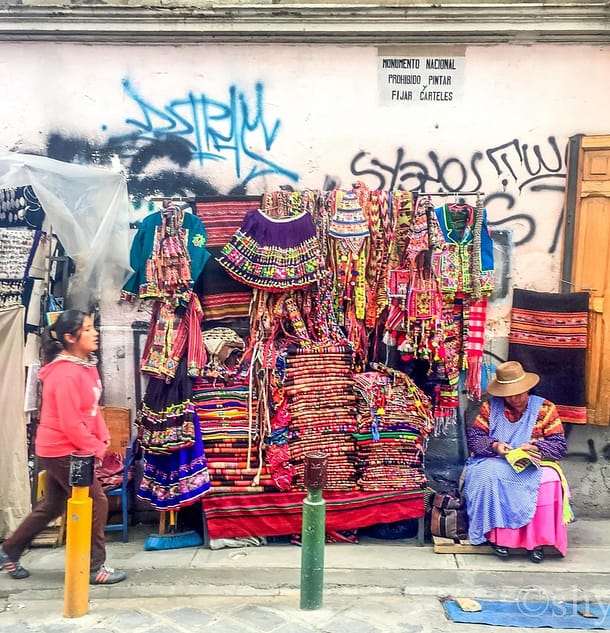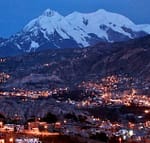“Life is not about how many times you fall down. It’s about how many times you get back up.”
– a famous quote from Jaime Escalante
(a Bolivian educator who inspired the movie, Stand and Deliver)

I was not familiar of Bolivia before so it wasn’t really on my bucket list and not even on my itinerary when I was just planning to visit South America. Not until one of my friends visited it in 2015 and posted some amazing dreamy photos from Salar de Uyuni, then suddenly it’s already on my list! Who wouldn’t?!? Then the more I read about Bolivia the more I get interested in going there.
I created a separate entry for Salar de Uyuni, HERE.
At this point, I was already on my 30th day of travelling around South America (plus Antarctica), and this was my 5th country with several hiking trips. I was already falling sick and I still needed to go to Brazil for 2 weeks more. It was a strenuous itinerary I must admit, but I have longed for doing this South America trip that no matter how tiring it may seem already, I needed to carry on. Besides, I know I will be reunited soon with my husband in Brazil so that’s something to look forward too.
I flew from Cuzco to La Paz just the next early morning after I climb Vinicunca Rainbow Mountain in Peru. Being drenched for 2 consecutive days whilst hiking strenuously, definitely I will be shattered and fatigued. I promised myself, no more hiking after this. But then I remember, La Paz is in a much higher altitude than Cuzco at 3,600m, so by just walking around the city might feel like hiking as well. Again, I took my altitude sickness preventive medicine, Diamox, but with paracetamol this time.
La Paz is the highest metropolitan in the world given this high altitude, so even it’s just slightly below the equator, it is cold here all-year round. Again, I wasn’t aware of how cold it would be and underestimated it that I vacuum packed all my warm clothes already! I was feeling so cold (because I’m poorly too) but I was too lazy to unpack my backpack knowing I am staying in Bolivia for 3 days only, lol! So I decided to be tough despite being poorly.
I arranged my airport pick-up with my hostel, Loki Hostel. I arrived quite early, so I rested for a while at my room before I went back to the reception again to arrange my Salar de Uyuni excursion for the next day and to start my Free Walking Tour in La Paz. After I met my guide for the free walking tour, we left the hostel and we just walked down to Sagarnaga Street (beautiful main tourist strip) towards Plaza San Francisco.

It is a busy area of the city, I saw lots of young locals gathering, a lot of tour groups too, and at that time there was an on-going political rally (a common sight according to our guide), because this plaza is located right at the centre of the city. Our guide (which I forgot the name again sorry!) was considerate enough to walk slowly because he knew most of us just arrived La Paz and has not acclimitised sufficiently yet.
I think coming from Cuzco, I have acclimatised enough already, but since I was falling sick and shattered from 2 consecutive strenuous hikes, I was at my worst shape already at that time.

As the crowd gets thicker, we started to move to San Pedro Plaza beside the San Pedro Prison which is by far the most interesting place that our guide shared with us. This prison is not like any ordinary prison, it’s a community.
They have jobs inside and their families can live with them because the cells are like houses, having said that they rent their cells/houses depending on the section, the most expensive ones have multiple stories, bath tub, cable tv, etc. whereas the cheapest ones are in the dangerous section of the prison. They have prison hotels for their visiting guests, prison restaurants and cafes, prison market, prison recreational sports area, prison football field, prison hospital, prison church, etc. etc.
Apart from they have their own committee heads/leaders, they are also allowed to vote on national election. It may sound very humane, but it is actually more corrupt. The inmates have their own rules and law imposed inside resulting to more crimes, (the police do not go inside the prison btw) they produce cocaine inside and is the largest source of cocaine and drugs in La Paz.
It’s that interesting that they conduct prison tours amongst tourists, but our guide discourages us to have one because it’s not always safe especially if you picked a wrong tour operator, you cannot risk it. He also shared one horrible story about a young Australian girl who DIY it just because she read on her Lonely Planet’s guide book that she can tour inside, unfortunately for that girl, she was missing for a month or so, and got out of the prison, raped! Scary isn’t? Don’t be too adventurous my dear lady travellers.

Another interesting place we visited is the Mercado de las Brujas or the Witches Market. Most Bolivians are very superstitious and still believes in old form of medicines and charms. This place is like the Quiapo church in Manila where shops sells strange products like potions, aphrodisiacs, lucky charms, and alternative medicines. Most famous and only common in Bolivia is the dried fetuses of the llama animal that is offered to goddess Pachamama to bless the foundation of their houses, rich people though offers live llamas.

We ended our walk at Plaza Murillo, the main plaza of the city and the home of the political and administrative power of the country. This is where the Presidential Palace, National Congress, and La Paz Cathedral are located. We talked about the politics of Bolivia here and our guide said that Bolivia is holding the record of most coup d’etats in the world and not Brazil. I must say too that the politics of Bolivia is as much as colourful as Philippines, lol!
I remember watching Crisis is our Brand (based on a true story of an American political strategist who made one Bolivian politician won the election, starring Sandra Bullock) because the strategy used in this film is a copycat to the strategy used during the campaign of our president now, a lot of my Filipino family and friends will get angry with me for saying this hahaha! Just watch the movie, lol!

After my guide walked me back to my hostel, Loki Hostel, I had my late lunch/early dinner at the top floor which has a panoramic view of the city, the food were great, the staff were cool, and in as much as I want to reward my long walk with a pint of local beer, I just had an energy drink (like Gatorade) not just to give me more energy but it’s also a good drink for altitude sickness. I don’t think I was having altitude sickness, I was just really over-fatigued from travelling for over a month at that point.

After that, I was so excited on my next tour, the Flying Cholitas Wrestling at El Alto! I’m not a huge fan of WWF (Though I used to be a huge fan when I was little) but I am a huge of Nacho Libre, the movie inspired by true story of a priest who joined lucha libre to fund food for the orphans (comedy starring Jack Black). I’ve encountered in one of my researches about La Paz about this Lucha Libre where instead of men in masks fighting it will be women in Bolivian traditional dress (puffy skirts and small bowlers hat)! This happens every Thursday and Sunday only and I was lucky to be in La Paz on a Sunday.
Cholitas is a term used for the empowered women of Bolivia. Flying Cholitas started with women who are victims of domestic abuses and this is their way to express their anger and frustrations. Sadly, women abuse, sexism, and racism still exist in the country. So women joins to be a Flying Cholita as their way to be equal with men in terms of earning money and having a male-dominated job.

After picking us up at my hostel, we stopped by a shop and our guide told us we can buy maximum 2 bottles of beer each if we want to drink at the stadium as they do not sell alcohol there. After a long traffic journey to El Alto, we reached the stadium with a long queue outside, good thing we have tickets already. Our ticket is the so-called “VIP” or the ringside, the other ticket will be at the bleachers.
At the VIP, we have plastic chairs, free food (popcorn and softdrinks only, lol!) and 2 access tickets to toilets, not bad haha! But if you are seated at the VIP, be prepared to be part of their acts too haha! Most gringo men were being kissed on the lips and chances are they will also drink your own drinks and worst is spit it out at you hahaha! Of course, just like WWF, everything were just staged to give you entertainment, so if you are up for a good laugh, go and watch it! I also believe I got well from laughing my heart out by watching the Flying Cholitas, so I truly enjoy and recommend it to anyone going to La Paz.

After a long day full of activities, I went to bed quite early (well, 10pm is early here) because of my early flight the next day to Uyuni. I needed to rest too even if I’m feeling better already. As I flashback on how my day went that day, I realised how interesting this city is and it’s a shame I did not stay longer than I planned. The oppression against the Spanish regime, the stories about their coup d’etat against many leaders of the country, and the story of the abused women like the Cholitas were good examples to describe one of the best traits of a Bolivian – being resilient.
This is an evidence of Bolivians rising up against every challenge they face. They don’t dwell on failures, they acknowledge the situation and then move forward. And that for sure makes their history and culture a lot more interesting than others.

As I mentioned above, upon arriving La Paz I was already over-fatigued. I was afraid I might feel burnt-out because I still have 2 weeks more to travel in Brazil after Bolivia together with my husband. La Paz is that interesting city that it somehow had helped me restore my will to carry on. I felt a lot better because of the vibes of the city, the warmth of the people I meet, and of course that enjoyable laughter watching the Flying Cholitas, lol!
I am naturally resilient but I do have moments too that I want to give up. Fostering your own resilience is as simple as having positive outlook despite the stress or exhaustion. Indeed, life is not about how many times you fall down. It’s about how many times you get back up. Your crisis may seem overwhelming in the moment, it may not make that much of an impact over the long-term. So just before I slept that night, I am more recharged and excited to see what I really came for in Bolivia – the Salar de Uyuni 😉









